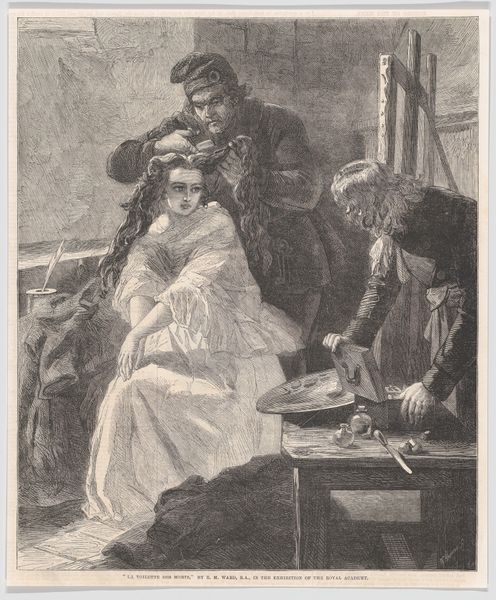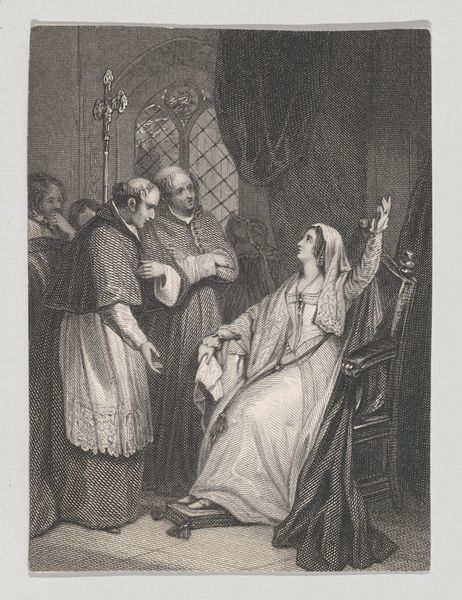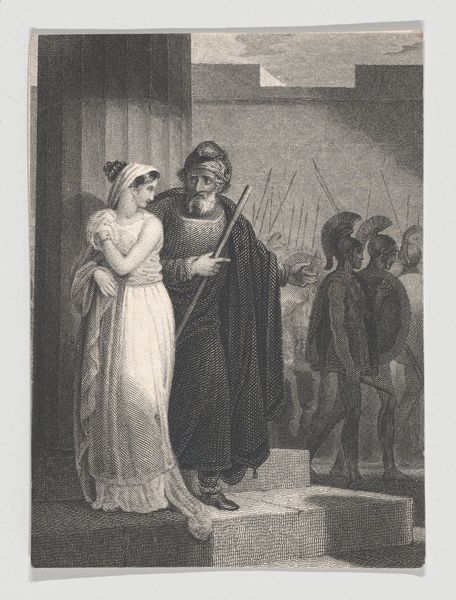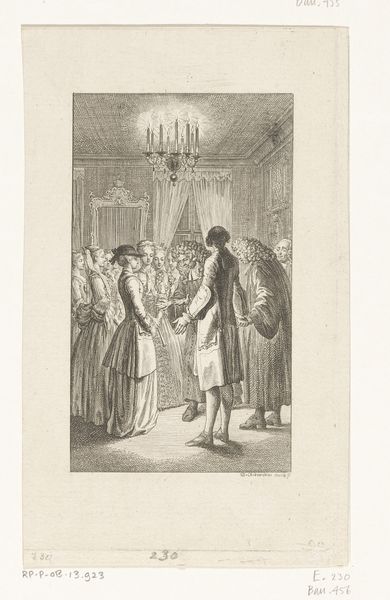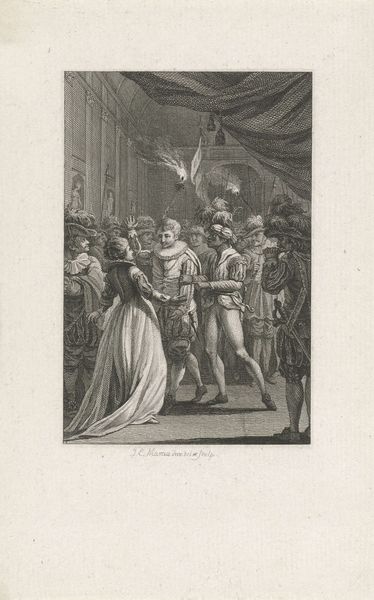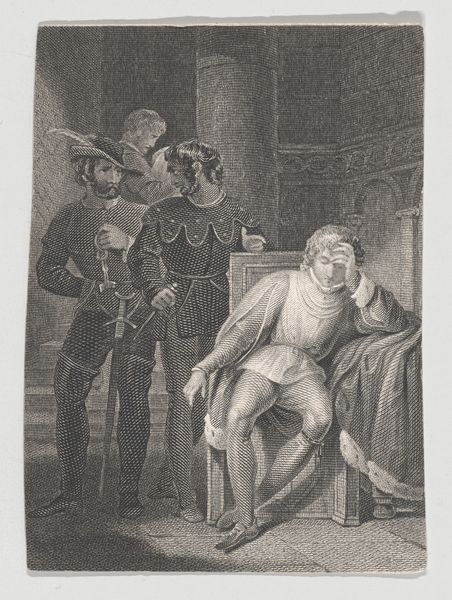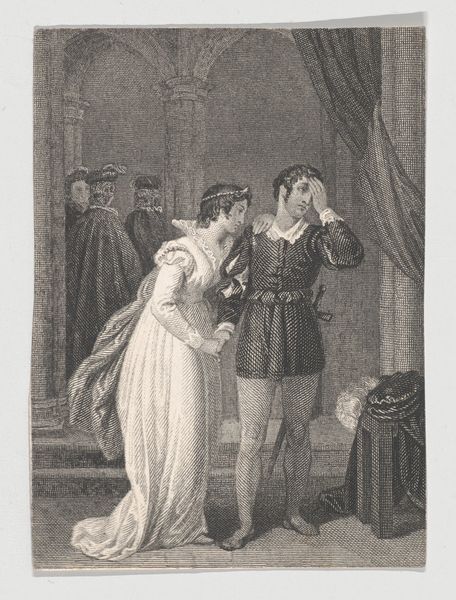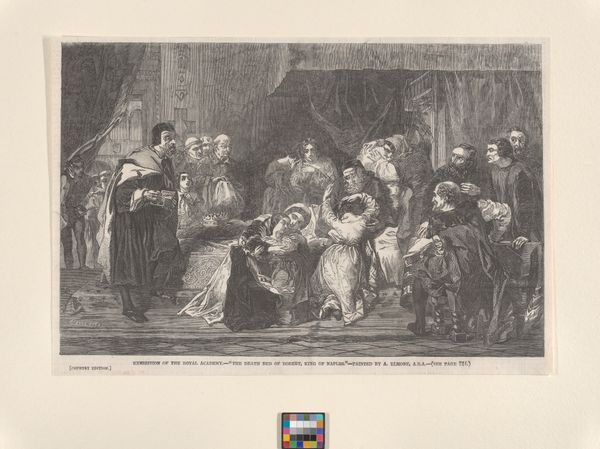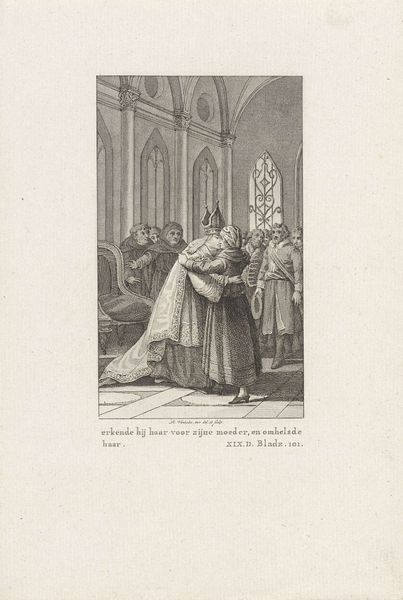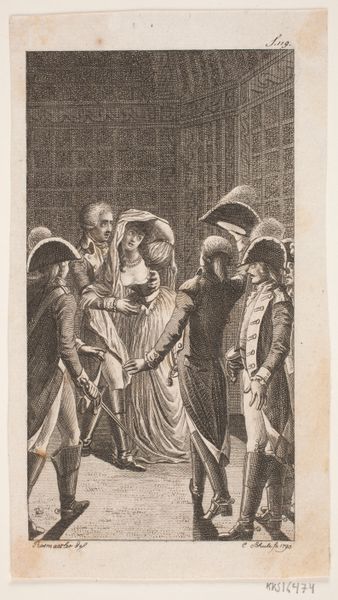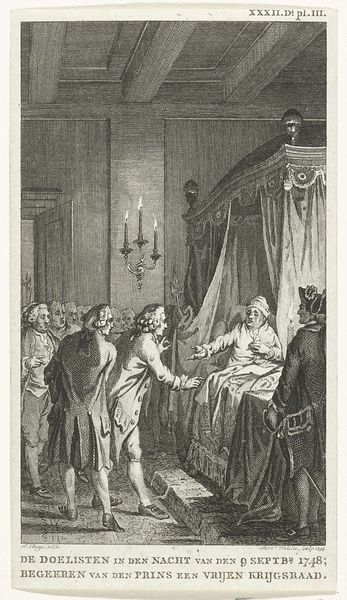
King Richard and Queen Isabel (Shakespeare, King RIchard II, Act 5, Scene 1) 1825 - 1840
0:00
0:00
drawing, print, engraving
#
portrait
#
drawing
#
narrative-art
# print
#
figuration
#
romanticism
#
history-painting
#
engraving
Dimensions: Sheet: 3 7/16 × 2 9/16 in. (8.8 × 6.5 cm)
Copyright: Public Domain
Curator: This engraving, dating from 1825 to 1840, by William Chevalier captures a poignant moment: "King Richard and Queen Isabel (Shakespeare, King Richard II, Act 5, Scene 1)." Editor: Gosh, what a farewell scene! The body language alone screams heartbreak. All that hatching creates a claustrophobic atmosphere too, as though history is bearing down on them. Curator: Indeed. Chevalier, working within a Romantic sensibility, pulls out the historical narrative elements inherent to Shakespearean drama. Consider how an engraving reproduces art: multiple identical copies can be circulated, bringing historical drama and idealized figures to the masses. This is not just about art; it is a carefully disseminated and accessible object. Editor: Accessible maybe, but deeply melancholic! Look at the Queen's embrace—it's as if she's trying to merge with him, to prevent the inevitable. And the armed guards in the background…grim harbingers of his doom. One can feel their cold metal, that steely, unavoidable end drawing closer. Curator: Yes, the steel and the page upon which it's rendered share material properties, as a consequence of similar extraction methods from the Earth. Note how that sense of imminent downfall is reinforced by the detailed rendering of their costumes and surroundings. Every fold, every line, every feathered cap signals the weight of history and societal expectations on these figures. The material conditions shape what is signified. Editor: Absolutely. Though knowing the scene gives an advantage. Still, there’s a power here beyond the text. It gets the feels churning! The print medium serves this narrative of doom and the feeling seeps into every line. I like to imagine how that would be staged theatrically to fully embody the art! Curator: It is precisely the relationship between the material form, an engraving meant for broad consumption, and its emotional resonance which I find most striking in this piece. The Romantic artists sought not merely to represent, but to move, using reproducible methods. Editor: Well, it got me. Maybe I should binge watch Shakespeare soon? Curator: Always an enriching experience.
Comments
No comments
Be the first to comment and join the conversation on the ultimate creative platform.
